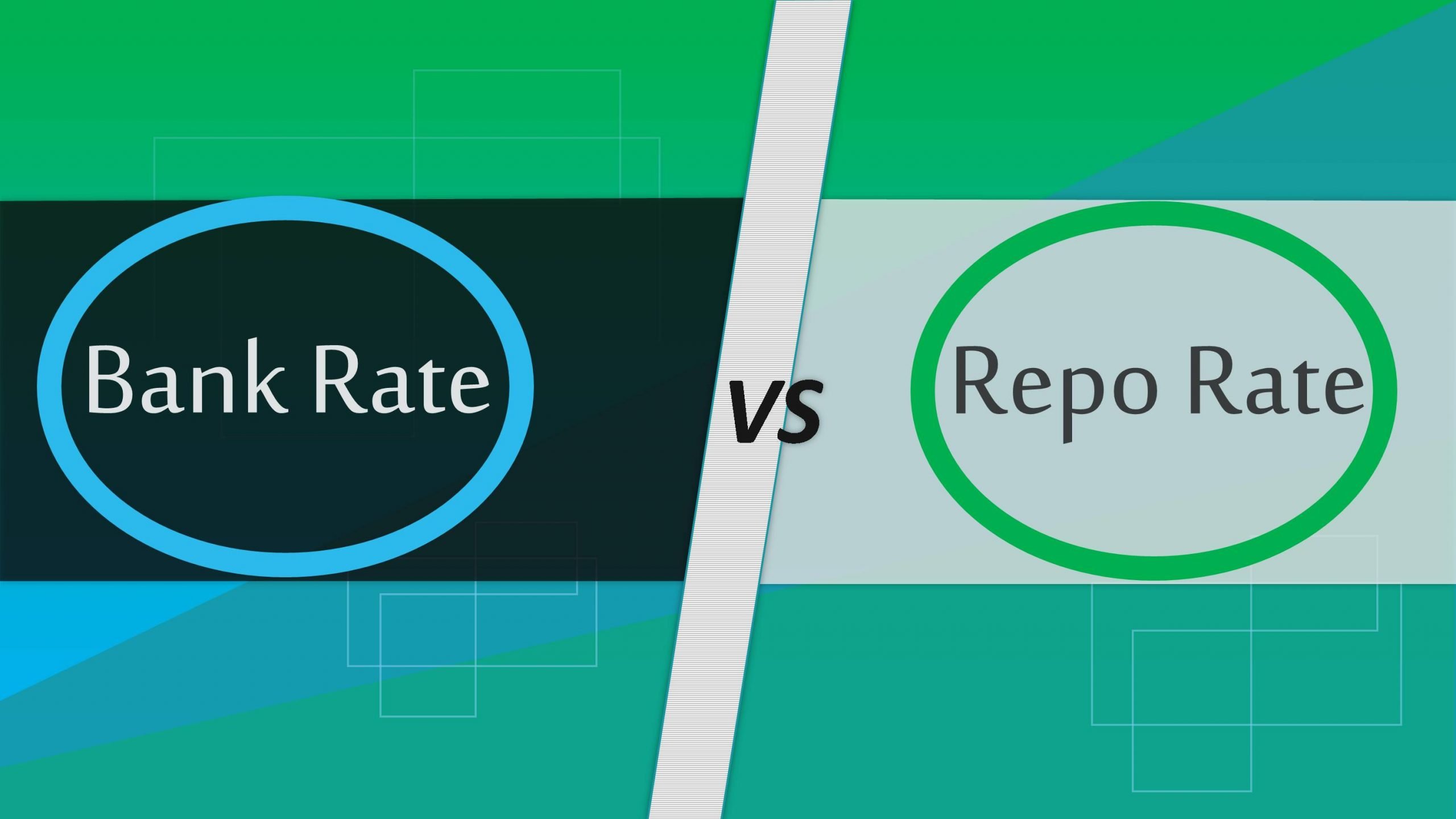In this article, we will discuss the difference between bank rate and repo rate. Sometimes the commercial banks or other financial institutions suffer a liquidity crunch (shortage of funds). Hence in such circumstances, banks or financial institutions borrow the funds from the Reserve Bank of India (RBI), the Central Bank of India.
The Reserve Bank of India will charge an interest rate over the funds given to financial institutions. The banks may require the money for a short term (one day or overnight) or long term period and the interest rate is charged by RBI based on the period.
The Bank Rate and Repo Rate are two kinds of interest rates applied at the time of advances to the banks or other financial institutions. Although the Bank rate and Repo rate the interest rate charged by the central bank of India (Reserve Bank of India), yet there is some major difference between Bank Rate and Repo Rate.
Table of Contents
Bank Rate vs Repo Rate (Comparison Chart):
| Comparison Aspects | Bank Rate | Repo Rate |
|---|---|---|
| Meaning & Definition | Bank Rate is interest rate at which banks borrow funds for long term period from RBI. | Repo Rate is interest rate at which banks borrow funds for short term period by pledging government securities as collateral. |
| Collateral | Not required | Required |
| Repurchase Agreement | NO | YES |
| Interest Rates | Higher | Lower |
| Tenure | Long term (90 days or More) | Short term (Overnight to 90 days) |
| Penal Rate | Used As Penal Rate | NO |
| Other Uses | Also used for rediscounting of bills of exchange, commercial papers etc | Not Used |
| Effect on Interest Rates | Directly on general Public (Consumer) | Not directly affect market interest rates |
Difference between Bank Rate and Repo Rate:
The bank rate and repo rate can be distinguished on different points of view. Each perspective is discussed below.
1) Meaning & Definition:
The Repo Rate is defined as the interest rate charged by the Reserve bank of India to avail short term loans/ advances by purchasing the government securities from the commercial banks or other financial institutions with a promise to repurchase at a future specified date.
In other words, the banks or financial institutions have to pledge the government securities (RBI approved) as collateral with a promise to repurchase the same in future to get a loan from the RBI.
For more detailed information follow the link below.
What is Repo Rate and Reverse Repo Rate?
On the other hand, The Bank Rate refers to the interest rate charged by RBI for long term loans but in this case, the banks or financial institution don’t require to pledge the government securities as collateral.
For more detailed information follow the link below.
What is Bank Rate? How does it work?
Thus we can conclude that the Repo rate deals with the sale and purchase of government securities whereas Bank rate deals with the loan/ advanced between the Central bank (RBI) and financial institutions.
2) Collateral:
In the case of Bank rate, no collateral is required whereas to get loans through Repurchase Options Agreement (REPO) the banks require the securities as collateral.
3) Repurchase Agreement:
Since there is no collateral required in bank rate, hence there shouldn’t be any repurchase agreement of securities.
On the other hand, a Repurchase agreement (pledged securities) is mandatory in case of repo rate.
4)Interest Rates:
The bank rate is always some base points higher than the Repo Rate.
5) Tenure:
As we discussed above Bank rate fulfil the long term requirement of funds (more than 90 days), on the other hand, Repo rate fulfil short term needs (one day or overnight to 90 days) of funds of the financial institutions.
6) Penal Rate:
The Bank Rate is also utilised as a penal rate if the commercial banks don’t maintain the Cash Reserve Ratio (CRR) and Statutory Liquidity Ratio (SLR) whereas the repo rate is not used as such.
7) Other Uses:
The bank rate is also used for the purpose of rediscounting of the bill of exchange, commercial paper etc whereas repo rate is not used for such purposes.
8) Effect on Interest Rates:
The borrowing or lending rate (interest rates) is directly proportional to the Bank rate. That means if the bank rate is increased/ appreciated by the RBI, the rate of interest in the market will also increase, hence a rise in bank rate affect the general public directly as the various loans will become costly.
Whereas, Repo rate doesn’t affect the rate of interest in the market directly.
Conclusion:
Hope this blog would help you to clarify the difference between bank rate and repo rate. Though we can conclude the above article within three points.
- The bank rate deals with debt/loans whereas the Repo rate is related to the sale and purchase of government securities to get loan/advance from the central bank.
- The bank rate is also used as a penal rate whereas the repo rate isn’t. Also, a rise in bank rate directly affects the lending rates to the customers and the repo rate doesn’t affect the interest rates in the market directly.
- The bank rate caters long-term whereas repo rate caters the short-term needs of the commercial banks.
Recommended Articles:
Difference between CRR and SLR
Open Market Operations (OMO) | Meaning, Process & Functions
What is Marginal Standing Facility?
Liquidity Adjustment Facility (LAF)
References:
